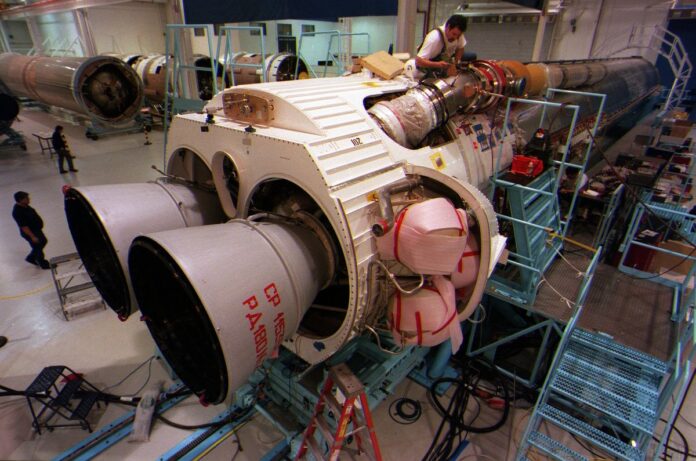Rocket engines are the driving force behind space exploration, propelling spacecrafts beyond Earth’s atmosphere and enabling them to reach incredible velocities. To understand how a rocket engine works, it is crucial to delve into the principles that govern its operation. At its core, a rocket engine is a device that converts stored energy in the form of propellant into the thrust needed to propel a rocket forward. This energy conversion occurs through the controlled ignition of a fuel and an oxidizer in the process of combustion. As the fuel burns, it expels an enormous amount of energy in the form of hot gases through a nozzle at the rear of the rocket, generating thrust.
To delve deeper into the inner workings of a rocket engine, it is important to familiarize oneself with its various components. A rocket engine consists of several key parts that work together seamlessly to generate thrust. The primary components include:
- The combustion chamber
- Nozzle
- Propellant feed system
- Turbopumps
The combustion chamber mixes and burns the fuel and oxidizer, producing hot, high-pressure gases. These gases then flow through a nozzle specifically designed to accelerate and direct the exhaust gases at high speeds, propelling the rocket forward. The propellant feed system ensures a steady supply of fuel and oxidizer to the combustion chamber, while the turbopumps use mechanical energy to drive the propellant flow and maintain the necessary pressure levels. Understanding each of these parts is critical in comprehending the intricate workings of a rocket engine.
The Role of Combustion: Unveiling the Process of Fuel Burning in Rocket Engines
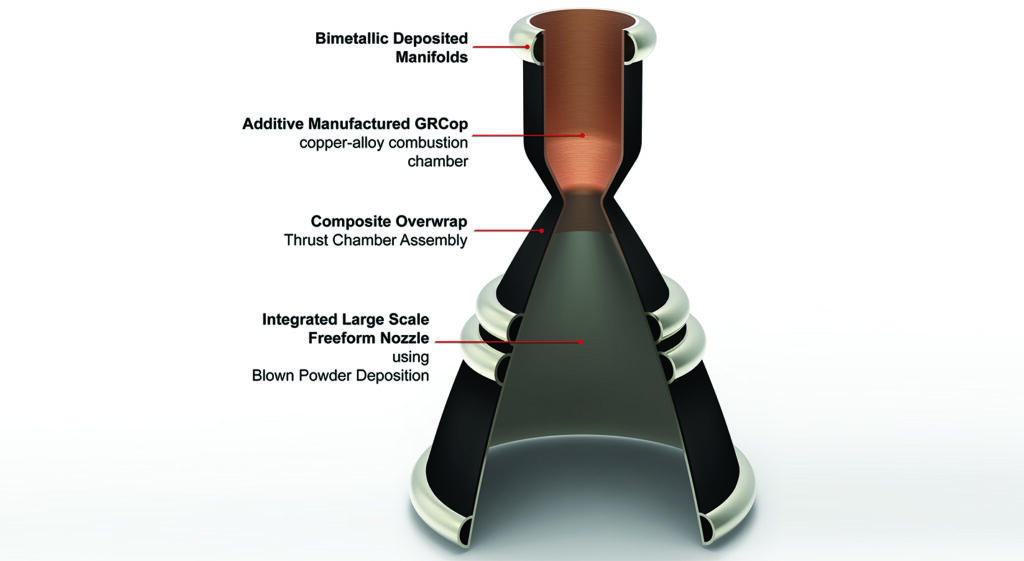
Combustion is a critical process in rocket engines that enables the propulsion necessary for space exploration. Rocket engines come in various types, with one key distinction being between liquid-fueled and solid-fueled engines. The process of combustion in these engines involves the controlled burning of fuel to release energy and produce thrust.
In liquid-fueled engines, they store a combination of fuel and oxidizer separately and then mix them in the combustion chamber. Igniting this mixture initiates a chemical reaction that produces high-pressure gases. Expelling these gases through a nozzle creates the forward motion necessary for the rocket to overcome Earth’s gravity. On the other hand, solid-fueled engines consist of a solid propellant mixture, often composed of metals and oxidizers. Applying the ignition source causes the propellant to undergo rapid combustion, resulting in the expulsion of high-pressure gases through a nozzle. The combustion of the solid propellant provides the thrust required to propel the rocket forward.
Understanding the role of combustion in rocket engines is crucial for optimizing performance and ensuring the safe and reliable operation of space missions. By unraveling the intricacies of fuel burning in different types of rocket engines, scientists and engineers can enhance the efficiency and effectiveness of propulsion systems. Furthermore, advancements in combustion processes continue to play a significant role in pushing the boundaries of space exploration, enabling us to reach farther into the cosmos than ever before.
Thrust and Propellant: Understanding How Rocket Engines Generate Forward Motion
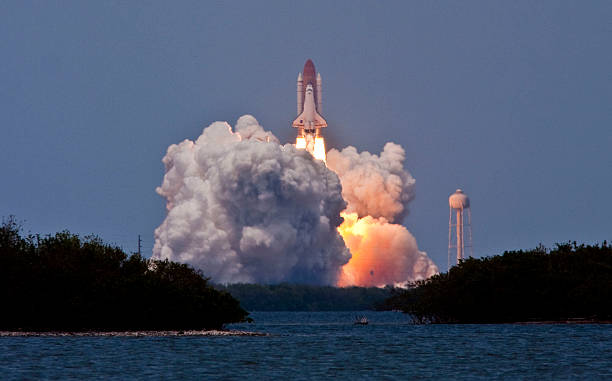
The generation of forward motion in rocket engines relies on two fundamental components: thrust and propellant. Thrust refers to the force that propels the rocket forward, while propellant serves as the source of energy for generating that thrust. To understand how these components work together, it is essential to delve into the intricacies of rocket engine mechanics.
At the heart of a rocket engine lies the combustion chamber. This is where the magic happens – the propellant, typically a combination of fuel and oxidizer, undergoes controlled combustion. The chemical reaction releases an enormous amount of energy in the form of hot gases. The rocket engine expels these gases through a nozzle at its rear, generating a powerful jet. According to Newton’s third law of motion, for every action, there is an equal and opposite reaction. In this case, the expulsion of hot gases through the nozzle exerts a force in the opposite direction, effectively propelling the rocket forward. The specific design and shape of the nozzle are crucial in optimizing thrust, ensuring maximum efficiency and acceleration. Through a carefully engineered action-reaction process, the rocket engine generates the necessary forward motion to reach space and beyond.
The Components of a Rocket Engine: A Detailed Look into the Building Blocks of Propulsion
Rocket engines are complex machines that rely on several key components to generate the force needed for space travel. One of these critical components is the turbopumps, which play a vital role in delivering the propellant to the combustion chamber. Either a gas generator or a turbine drives these pumps, ensuring a continuous flow of propellant to sustain the combustion process. The efficiency and reliability of these turbopumps are paramount to the success of any space mission.
Another essential component of a rocket engine is the regenerative cooling system. As rocket engines burn fuel, they produce an enormous amount of heat that can damage the engine’s structure. To prevent this, the system employs regenerative cooling, diverting a small portion of the propellant to flow through channels in the combustion chamber and nozzle. This flow acts as a coolant, absorbing the excess heat and preventing any structural failures. The design and implementation of an effective regenerative cooling system are crucial in ensuring the longevity and durability of rocket engines during the demanding conditions of space travel.
Rocket Propulsion Systems: Different Types and Their Applications in Space Exploration
Rocket propulsion systems play a crucial role in space exploration, providing the necessary thrust to propel rockets into orbit and beyond. Various types of rocket propulsion systems exist in space exploration, each possessing its own unique characteristics and applications. One of the most common types is liquid rocket propulsion, which utilizes liquid propellants such as liquid oxygen and liquid hydrogen.
Storing these propellants separately in tanks, the system combines them in a combustion chamber where a controlled combustion process occurs, producing highly pressurized hot gases. As the high-pressure gas is expelled through a nozzle, it creates a powerful thrust that propels the rocket forward.
Another type of propulsion system used in space exploration is solid rocket propulsion. Unlike liquid rocket engines, solid rocket engines comprise a single solid fuel grain that ignites to generate thrust. This type of propulsion is often used in boosters and initial stages of a rocket’s flight, providing a high amount of thrust at liftoff. Solid rocket motors are known for their simplicity, reliability, and high energy density. They are often used in combination with other rocket propulsion systems to enhance overall performance. However, unlike liquid rockets, solid rocket motors are unable to be throttled or shut down once ignited, making them less versatile in certain applications.
In addition to these traditional rocket propulsion systems, there has been ongoing research and development in advanced propulsion technologies for space exploration. One such example is electric propulsion, which utilizes ion or plasma thrusters to generate thrust. These engines are characterized by their high specific impulse – a measure of how efficiently the engine uses propellant. While electric propulsion provides a smaller amount of thrust compared to conventional rocket engines, it can operate for much longer periods of time, making it ideal for missions that require extended durations, such as interplanetary travel.
Overall, the selection of the appropriate rocket propulsion system depends on the specific mission requirements and the desired performance characteristics. Whether it’s the raw power of solid rocket motors, the versatility of liquid rocket engines, or the efficiency of electric propulsion, each type of propulsion system has its own advantages and trade-offs. As space exploration advances, further advancements in rocket propulsion systems are expected to push the boundaries of what is possible in our exploration of the cosmos.
The Role of Nozzles: How These Crucial Components Optimize Thrust in Rocket Engines
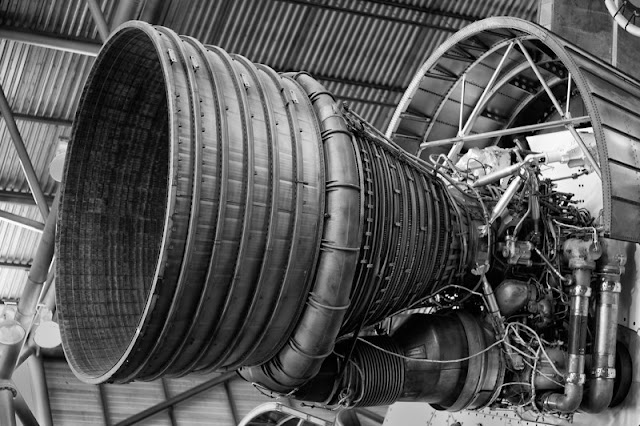
Nozzles play a pivotal role in rocket science and aerospace engineering, as they are crucial components that optimize the thrust generated by rocket engines. By carefully shaping and designing the nozzle, engineers can maximize the efficiency and power of the propulsion system. This is achieved through the expansion of the high-pressure, high-temperature exhaust gases expelled by the rocket engine.
One key concept behind nozzle design is the principle of converging-diverging flow. As the gases flow from the combustion chamber, they pass through the nozzle, which first converges to a narrow throat section before expanding at the diverging section. This shape allows the exhaust gases to reach supersonic speeds, converting the heat energy into kinetic energy and producing a significant increase in thrust. NASA and other space agencies have invested immense efforts in optimizing nozzle design to ensure optimal performance and enhance the overall efficiency of rocket engines. With continued advancements in nozzle technology, the field of aerospace engineering continues to push the boundaries of space exploration and propulsion systems.
Propellant Feed Systems: Examining the Mechanisms that Deliver Fuel to Rocket Engines
Propellant feed systems play a crucial role in the successful operation of rocket engines. These systems are responsible for delivering fuel from storage tanks into the combustion chamber, where it undergoes the burning process required for propulsion. Considering the complexities involved in space exploration, companies like SpaceX, under the guidance of visionary Elon Musk, have pushed the boundaries of propellant feed system design.
One of the primary challenges in propellant feed system design is the effect of gravity. On Earth, the force of gravity pulls the fuel downwards, making it necessary for rocket engines to counteract this force to ensure a continuous and even flow of propellant. Engineers have developed innovative solutions to overcome this obstacle, such as utilizing pressurized tanks or employing turbopumps that generate enough pressure to feed the fuel into the combustion chamber against the pull of gravity. By addressing the effects of gravity on propellant feed systems, companies like SpaceX have paved the way for the advancement of space exploration technology.
Combustion Chambers: Unraveling the Inner Workings of the Heart of a Rocket Engine
Combustion chambers serve as the heart of a rocket engine, where the magic of propulsion takes place. These chambers are crucial in order to generate the necessary thrust for a rocket to achieve escape velocity and overcome Earth’s gravity. By burning a mixture of fuel and oxidizer in controlled conditions, combustion chambers produce high-pressure and high-temperature gases that are then expelled through the nozzle, creating the forward motion needed for space exploration.
In understanding the inner workings of a combustion chamber, it is important to delve into the principles of orbital mechanics. When planning a Mars mission, for example, careful consideration must be given to the type of propellant used and its combustion dynamics, as well as the design and efficiency of the combustion chamber. This is crucial because the propellant composition directly affects the rocket’s performance and ultimately its ability to reach and establish a stable orbit around Mars. The combustion chamber plays a vital role in ensuring that the rocket engine operates optimally, thus maximizing the chances of a successful Mars mission.
Turbopumps and Turbines: Understanding the Mechanical Processes that Drive Rocket Engines
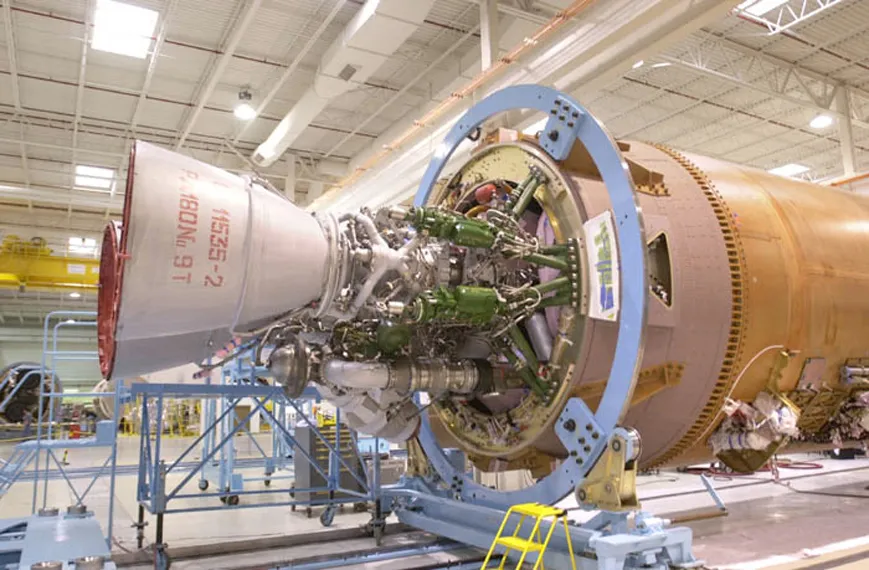
Turbopumps and turbines play a crucial role in powering rocket engines, driving the future of space travel. These mechanical components actively harness the energy generated by the combustion process and convert it into mechanical energy, which then propels the rocket forward.
Turbopumps are responsible for delivering the propellants to the combustion chamber at high pressures. Turbines typically drive these high-performance pumps, and they, in turn, derive power from the hot exhaust gases produced during the combustion process. The turbines harness the energy of the gas flow to drive the operation of the turbopumps, ensuring a continuous supply of propellant to the combustion chamber. This intricate mechanical system enables rocket engines to operate reliably and efficiently, allowing for the exploration and expansion of our space-faring capabilities.
As we push the boundaries of space exploration, advancements in turbopumps and turbines will play a vital role in propelling us forward. Researchers and developers are actively focusing on enhancing the performance and reliability of these crucial components, aiming to enable faster and more efficient journeys to distant destinations. With the continuous refinement of turbopump and turbine technology, the future of space travel holds the promise of even greater leaps and bounds, propelling humanity to new frontiers in the cosmos.
Rocket Engine Testing: Evaluating Performance and Ensuring Reliability for Successful Launches
Rocket engine testing plays a critical role in evaluating the performance and ensuring the reliability of rocket engines for successful launches. It is an essential step in the process of space exploration, allowing engineers to gather data, make adjustments, and validate the functionality of the propulsion system.
During testing, various parameters are measured and analyzed to assess the engine’s efficiency, stability, and overall performance. These parameters include thrust, specific impulse, chamber pressure, combustion stability, and many others. By meticulously examining these factors, engineers can identify any potential issues or areas for improvement and implement necessary modifications to enhance the engine’s performance and reliability. Additionally, testing helps in verifying the engine’s compliance with the required safety standards and regulations, ensuring that it meets the rigorous demands of space missions. Overall, rocket engine testing is a crucial phase that enables engineers to fine-tune the propulsion system and increase the chances of a successful mission.
What is rocket propulsion?
Rocket propulsion is the science and technology behind the motion of rockets. It involves the generation of thrust through the expulsion of high-speed exhaust gases.
How does a rocket engine work?
Rocket engines work by burning propellant in a combustion chamber, which releases hot gases at high pressure. These gases are then expelled through a nozzle, creating a reaction force known as thrust, which propels the rocket forward.
What is the role of combustion in rocket engines?
Combustion is the process of burning fuel in the rocket engine. It releases energy in the form of heat, which increases the pressure of the gases and drives the expansion of exhaust gases out of the nozzle, producing thrust.
How do rocket engines generate forward motion?
Rocket engines generate forward motion by expelling exhaust gases at high speeds through a nozzle. According to Newton’s third law of motion, for every action (expulsion of gases), there is an equal and opposite reaction (thrust) that propels the rocket forward.
What are the main components of a rocket engine?
The main components of a rocket engine include the combustion chamber, nozzle, propellant feed system, turbopumps, and turbines. These components work together to generate thrust and propel the rocket.
What are the different types of rocket propulsion systems?
There are various types of rocket propulsion systems, including liquid rocket engines, solid rocket motors, hybrid rocket engines, and electric propulsion systems. Each has its own advantages and applications in space exploration.
How do nozzles optimize thrust in rocket engines?
Nozzles are specifically designed to expand the exhaust gases and accelerate their flow, increasing their velocity and optimizing thrust. The shape and size of the nozzle play a crucial role in maximizing engine performance.
What is the purpose of propellant feed systems in rocket engines?
Propellant feed systems deliver fuel and oxidizer to the rocket engine at the required flow rates and pressures. They ensure a constant supply of propellant for sustained engine operation during a rocket launch.
What is the role of combustion chambers in rocket engines?
Combustion chambers are the heart of a rocket engine where propellant is burned. They provide an environment for efficient fuel combustion and high-pressure gas generation, which leads to the creation of thrust.
How do turbopumps and turbines contribute to rocket engine operation?
Turbopumps and turbines are mechanical components that drive the flow of propellant and power various systems within a rocket engine. They help maintain the required pressure and flow rates for optimal engine performance.
Why is rocket engine testing important?
Rocket engine testing is crucial to evaluate and validate the performance, reliability, and safety of the engine before its actual use in a launch. It helps identify any issues, optimize design, and ensure successful missions.
